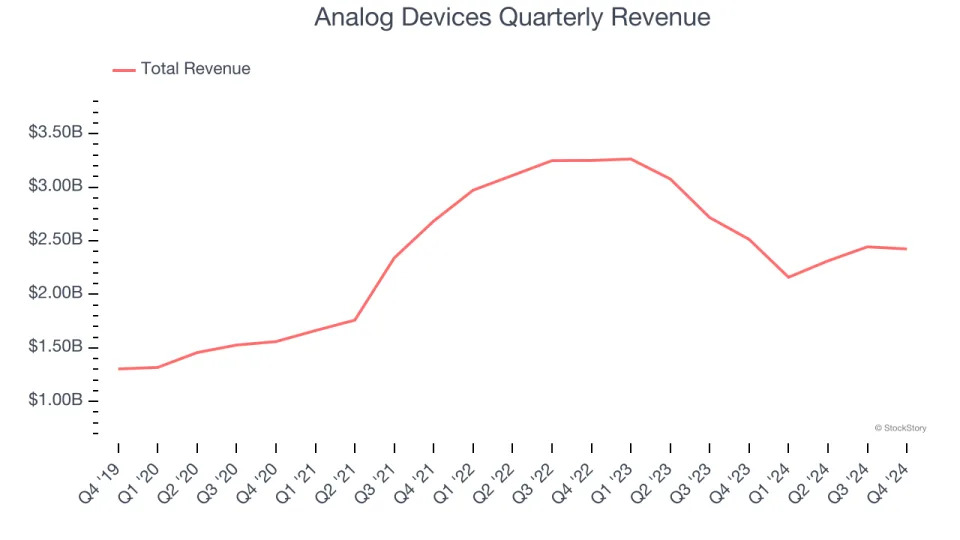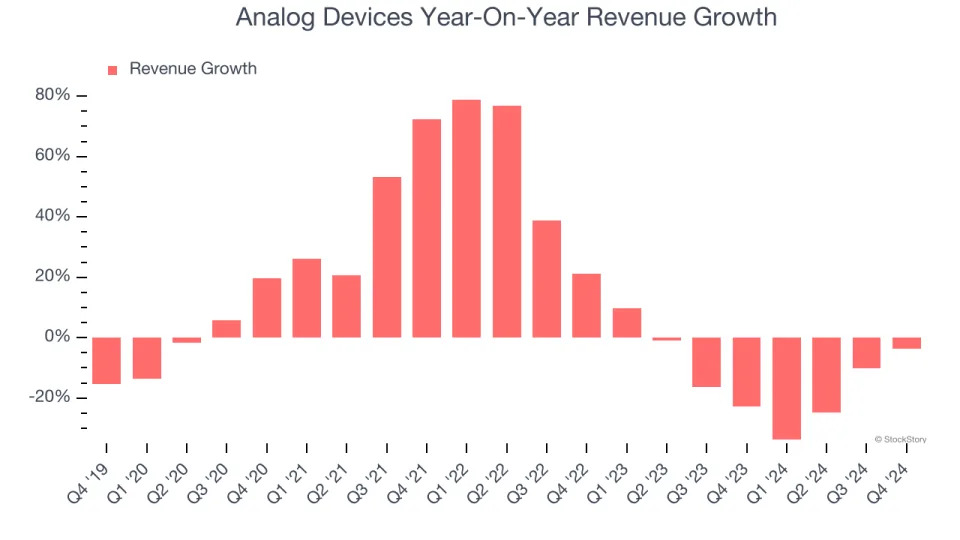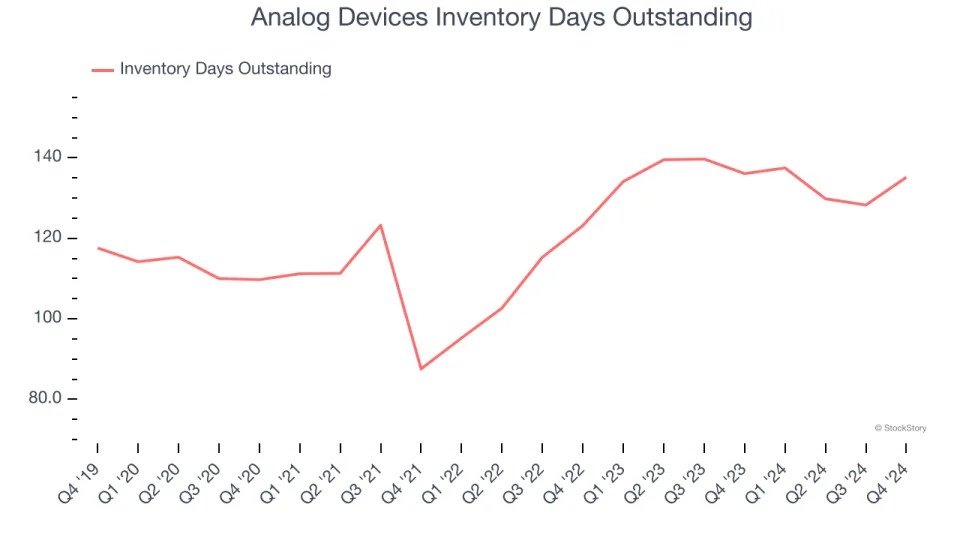
Manufacturer of analog chips, Analog Devices (NASDAQ:ADI) announced better-than-expected revenue in Q4 CY2024, but sales fell by 3.6% year on year to $2.42 billion. Guidance for next quarter’s revenue was better than expected at $2.5 billion at the midpoint, 1.9% above analysts’ estimates. Its non-GAAP profit of $1.63 per share was 5.7% above analysts’ consensus estimates.
Is now the time to buy Analog Devices? Find out in our full research report .
Analog Devices (ADI) Q4 CY2024 Highlights:
"ADI delivered first quarter revenue, profitability, and earnings per share above the midpoint of our outlook, despite the challenging macro and geopolitical backdrop," said Vincent Roche, CEO and Chair.
Company Overview
Founded by two MIT graduates, Ray Stata and Matthew Lorber in 1965, Analog Devices (NASDAQ:ADI) is one of the largest providers of high performance analog integrated circuits used mainly in industrial end markets, along with communications, autos, and consumer devices.
Analog Semiconductors
Demand for analog chips is generally linked to the overall level of economic growth, as analog chips serve as the building blocks of most electronic goods and equipment. Unlike digital chip designers, analog chip makers tend to produce the majority of their own chips, as analog chip production does not require expensive leading edge nodes. Less dependent on major secular growth drivers, analog product cycles are much longer, often 5-7 years.
Sales Growth
A company’s long-term sales performance signals its overall quality. Even a bad business can shine for one or two quarters, but a top-tier one grows for years. Luckily, Analog Devices’s sales grew at a solid 10.2% compounded annual growth rate over the last five years. Its growth beat the average semiconductor company and shows its offerings resonate with customers. Semiconductors are a cyclical industry, and long-term investors should be prepared for periods of high growth followed by periods of revenue contractions.

We at StockStory place the most emphasis on long-term growth, but within semiconductors, a half-decade historical view may miss new demand cycles or industry trends like AI. Analog Devices’s recent history marks a sharp pivot from its five-year trend as its revenue has shown annualized declines of 13.8% over the last two years.

This quarter, Analog Devices’s revenue fell by 3.6% year on year to $2.42 billion but beat Wall Street’s estimates by 2.9%. Company management is currently guiding for a 15.8% year-on-year increase in sales next quarter.
Looking further ahead, sell-side analysts expect revenue to grow 12.1% over the next 12 months, an improvement versus the last two years. This projection is admirable and suggests its newer products and services will catalyze better top-line performance.
Here at StockStory, we certainly understand the potential of thematic investing. Diverse winners from Microsoft (MSFT) to Alphabet (GOOG), Coca-Cola (KO) to Monster Beverage (MNST) could all have been identified as promising growth stories with a megatrend driving the growth. So, in that spirit, we’ve identified a relatively under-the-radar profitable growth stock benefiting from the rise of AI, available to you FREE via this link .
Product Demand & Outstanding Inventory
Days Inventory Outstanding (DIO) is an important metric for chipmakers, as it reflects a business’ capital intensity and the cyclical nature of semiconductor supply and demand. In a tight supply environment, inventories tend to be stable, allowing chipmakers to exert pricing power. Steadily increasing DIO can be a warning sign that demand is weak, and if inventories continue to rise, the company may have to downsize production.
This quarter, Analog Devices’s DIO came in at 135, which is 15 days above its five-year average, suggesting that the company’s inventory has grown to higher levels than we’ve seen in the past.

Key Takeaways from Analog Devices’s Q4 Results
We enjoyed seeing Analog Devices exceed analysts’ revenue, EPS, and adjusted operating income expectations this quarter. We were also glad its revenue and EPS guidance for next quarter outperformed Wall Street’s estimates. On the other hand, its inventory levels increased. Still, we think this was a solid quarter with some key metrics above expectations. The stock traded up 6.3% to $234.11 immediately after reporting.
Analog Devices may have had a good quarter, but does that mean you should invest right now? If you’re making that decision, you should consider the bigger picture of valuation, business qualities, as well as the latest earnings. We cover that in our actionable full research report which you can read here, it’s free .





